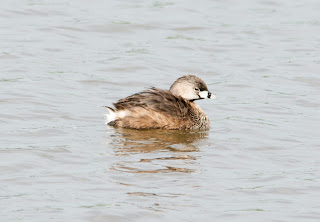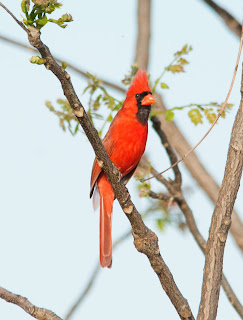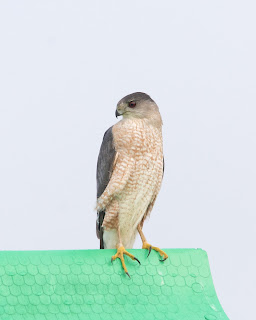Translate
Sunday, April 30, 2017
Saturday, April 29, 2017
Spring's Migrants Have Been Dropping In
Green Heron
Red-w
Yellow Warbler
Red-winged Blackbird
White-crowned Sparrow
Pied-billed Grebe
Northern Rough-winged Swallows
Savannah Sparrow
Franklin's Gull
White Pond Lily
Yellow-rumped Warbler
Clay-colored Sparrow
Red Eared Slider
Green Heron Nest
Yellow-headed Blackbird
04-23 through 04-28-17
It was cooler, cloudier, and rainier this week, but when it was clear, rising barometric pressure
and a good south wind, the migrants came through as expected.
My most productive days were Sunday and Thursday, which broke a couple of those general rules, which is why one can't alway leave everything to chance. Some of my best visitors were there on top migrant days, though. This is why one must look everywhere, especially behind you from time to time, as once those birds pass, those rear ends don't make for good photos.
The Green Herons built a nest, but circumstances are not the best for them. One of my adults is paired with a juvenile, which means that they can't breed quite yet. Last week's photo shows a bird in breeding plumage. However, if you compare it with this week's bird, you'll see the difference. The above bird doesn't have bright orange legs and still has juvenile plumage. The third bird also seems to have gone elsewhere, too.
I'm pleased that I was able to get a decent shot of the migratory Franklin's Gull in flight. It wasn't out of range of my camera lens, so you're able to see its distinguishing characteristics and see the dark wingtips which differentiate it from the Bonaparte's Gull. Bonaparte's shouldn't even be here at this time of year, either.
It's good to see those sparrows coming in. The water's edge grasses are filled with Clay-colored Sparrows, and I also found a beautiful adult White-crowned Sparrow, too. The above Savanah Sparrow came from the OSU Dairy Barns property, and the water lily was located at Sanborn Lake.
My best photo of the Yellow-headed Blackbird was at Boomer Lake, not the dairy barns! You will find more of them with the cattle, though.
I was both pleased and surprised to get all the Northern Rough-winged Swallows perched on a snag, and it was even better that I was fortunate enough to have them all looking at me. They are plain brown birds with hooks on their wingtips.
The warblers haven't really infiltrated the lake, but those crowds of Yellow-rumped Warblers are on their way north. Our Western Kingbirds are around as well, as I saw a good group on the wing on Friday. I heard and observed the Orchard Oriole, and with any luck, the rain needs to hold off tomorrow so I can get out there and let you know what birds came in before the storm.
Happy birding!
Wednesday, April 26, 2017
Please Cut Down on Your Plastic Usage For THEM
I am trying to do my part...Can you help me help THEM?
http://www.sarahwilson.com/2016/09/8-bits-of-plastic-you-can-quit-right-now/
http://www.sarahwilson.com/2016/09/8-bits-of-plastic-you-can-quit-right-now/
Sunday, April 23, 2017
Green Herons Have Returned and Are Now Nest Building
Green Heron
Yellow-rumped Warbler
American Robin
Mallard
Blue-winged Teal
Female in Front
Neotropic Cormorant
Barn Swallow
Northern Cardinal
Barn Swallow
Barn Swallows
04-16 to 04-22-17
This was a good week, too. Perhaps it wasn't as much as last week for migratory action, but photo ops were still excellent, even though we did have rain and a couple of cloudy days. It is to be expected.
The biggest news is that our Green Herons have moved back in at Heron Cove AND I noticed today that nest building is going on. I actually photographed the nest this morning, as it can be seen being
built. It is right over the water and high, which makes it perfect from where I stand to observe it on the berm. The birds that returned are the elder birds, and there is at least one more in residence, but in another tree. Isn't that exciting? We could well have an early crop of Green Herons if conditions are right, so keep your fingers crossed!
Three Spotted Sandpipers were seen on Tuesday, once the fog cleared, of course.
A Sedge Wren has made an appearance at the lake, which only happened once before, but this year I heard the bird for two days now and actually got a glimpse of it this morning. Perhaps it will stay long enough for me to have a photo.
Also today, there were four Clay-colored Sparrows at our beloved Boomer, three of whom are in the same area. They breed in the northern states above us, as well as in the southern part of the Canadian provinces. They are all recognized by their buzzing trills, which sound more insect-like, but they are heard easily enough, if not seen. They don't try to stay concealed like our Sedge Wren, though.
My good fortune was also in the cards yesterday, when a couple of the Barn Swallows stopped to land. They don't do this too often, which is why I was able to get some photos of them to show you what they look like standing still. There were Cliff Swallows in the mix, but they were not as accommodating. There was also a Tree Swallow, but that picture didn't turn out well with the cloud cover that kept interrupting.
There are still plenty of Yellow-rumped Warblers coming in from the south, and before we know it, our group will be leaving here for all points north in order to breed. I think the best photo that I have of a male Yellow-rumped Warbler is in the above posting, so luckily I was able to do that this spring. When the warblers return in the fall, they are much duller looking, which is one of the hazards of the fall.
Looks like good weather is ahead, so hopefully there will be a few more things for me to show you in the near future.
Sunday, April 16, 2017
Saturday, April 15, 2017
The Pre-Storm Impetus
One of Three Eastern Meadowlarks
Male Yellow-rumped Warbler
One of Three Migratory Savannah Sparrows
Migratory American White Pelicans
04-13/04-15-17
The winds have definitely been sweeping down the plains with a good southern push and trying to get the birds through the area before the rains come rushing down again.
Today was by far the best migratory movement that I have observed in the past two days.
Two days ago brought a group of three Savannah Sparrows that landed in this tree right in front of me.
Today brought two hundred American White Pelicans through the area, which was a sight to behold. I was in awe watching those birds wheeling through the air with the sun hitting their feathers and causing an explosion of white. They were also circling in different directions, which provided a show that was better than a flat three dimensional image, since they were in different planes in front of me. Fortunately, I saw them coming, but the group was so large, I could not get them all in one image.
Both Eastern and Western Kingbirds sported one member each, and a very early Baltimore Oriole female sang to me from on high.
These are the kinds of memories that show the true beauty of migration at its finest hours before the storm.
Wednesday, April 12, 2017
A Peregrine Falcon Makes a Migratory Pitstop
Peregrine Falcon
Yellow-rumped Warbler
Blue-winged Teal
Northern Cardinal
Beaver with Branch
Great-tailed Grackle
04-02 through 04-10-17
Spring gives us a little early action, with the addition of the migratory Peregrine Falcon. These
raptors only pass through Oklahoma. A juvenile bird was observed a couple of days prior to this one, and I never realized what it was until it was too late. Sadly, I could have had a beautiful airborne shot, but I'll settle for this one, even though it was quite a distance away.
A Red-tailed Hawk chased it away with its territorial scream, so I was very fortunate to have been in the right place at the right time.
The Great-tailed and Common Grackles have been around for a couple of weeks now, and I do so
enjoy finding them in the midst of the foliage.
These Blue-winged Teal males were asserting their dominance in the midst of the females.
I had lost track of our beaver and found him on the opposite end of the lake carrying a large branch.
It's no crime to move periodically into better territory.
Sunday, April 9, 2017
Sunday, April 2, 2017
Saturday, April 1, 2017
A Little Action Between the Purple Martins and a Cooper's Hawk
American White Pelicans
Cooper's Hawk
Brown Thrasher
Neotropic Cormorants
Harris's Sparrow
American White Pelicans
03-20 to 04-01-17
Quite a storm came in several days ago and with it, came a number of water birds and shore
birds, all distributed in a number of areas in Payne County. Some of them are still hanging on
and it is POSSIBLE that we might be in for another storm tonight. We shall see, as we don't
always get the bad weather since we are in a valley.
The pelican population has been growing since the storm. All of these beautiful birds appear
to be in breeding plumage, but I have not been able to see all their lovely faces. Some have
managed to sleep during some tumultuous Canada Goose uproars.
We could have more than seven Purple Martins on the east side of Boomer Lake, but it seems
that many of these birds have been exhibiting more kingbird behavior than their usual manners.
Some of their houses had been infiltrated by European Starlings and House Sparrows. They
have graciously allowed these birds to stay, but they forced their way in to their settlements.
What few of the martins there are, they are also patrolling an additional house, so they each
have two homes. Imagine that!
Now here's the kicker (sorry). The house across from Kicker (Stillwater Designs), has been the most active and the most watched by a Cooper's Hawk. Yesterday, I had a group of four martins over my head carrying on, and they were following me. A quarter of a mile later, I found out why, as you can see in the above photo. Their home was being used as a lookout post by this Cooper's Hawk, who didn't like the fact that I was photographing his transgression. The hawk then settled in the trees west of the martin house, whom I again photographed on my return trip from Boomer Creek. He then flew across the lake and the martins returned home from where they were sitting on the electric wires just east of their home.
Today, our brave heroes were in hot pursuit of the Cooper's Hawk, which I noticed upon my return
from Boomer Creek. These birds are relentless and apparently, fear very little.
The Brown Thrasher was my first of year bird a couple of days ago, and now there are two.
These three Neotropic Cormorants were from last month, and they were conveniently all seated together.
Tomorrow, I will see you in the paper with Life at Boomer Lake. Happy birding!
Subscribe to:
Comments (Atom)








































